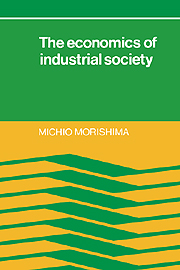1 - Markets and the price mechanism
Published online by Cambridge University Press: 21 January 2010
Summary
How are prices determined?
Views of the academics
Let us first consider the views of two representative scholars, Marx and Walras. The former, Marx, considers that the prices of goods are determined ‘by competition between buyers and sellers, by the relation of demand to supply, and of desire to offer’. He says that
The same commodity is offered by various sellers. With goods of the same quality, the one who sells most cheaply is certain of driving the others out of the field and securing the greatest sales for himself. Thus the sellers mutually contend among themselves for sales, for the market. Each of them desires to sell, to sell as much as possible and, if possible, to sell alone, to the exclusion of other sellers. Hence, one sells cheaper than another. Consequently, competition takes place among the sellers, which depresses the price of the commodities offered by them. But competition also takes place among the buyers, which in its turn causes the commodities offered to rise in price. Finally, competition occurs between buyers and sellers; the former desire to buy as cheaply as possible, the latter to sell as dearly as possible. The result of this competition between buyers and sellers will depend upon how the above-mentioned sides of the competition are related, that is, whether the competition is stronger in the army of buyers or in the army of sellers.
- Type
- Chapter
- Information
- The Economics of Industrial Society , pp. 13 - 37Publisher: Cambridge University PressPrint publication year: 1985



